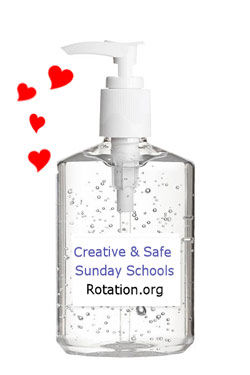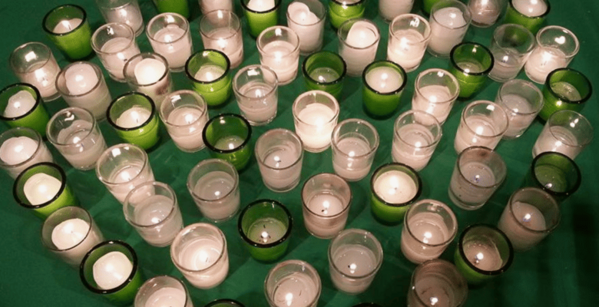
The following "10 Safety and Security Mistakes" are from Dale Hudson a children's pastor at Building Children's Ministry dotcom where he posted this free checklist at KidCheck's secure check-in website. Some of these are spot-on. Some are debatable depending on your circumstances and POV. I've added my comments to each in orange. Your feedback welcome. These opinions are my own.
For smaller churches, one way to cover many of the following "mistakes" is to simply have a designated and trained adult monitoring the hallways and doorways of the children's area, along with a strategically placed camera or two.
10 safety and security mistakes churches make
1. No check-in and out plan or not enforcing the one you have. It is crucial to have a security system that enables you to control who picks up the children. Everyone should abide by this… that means even if the Pastor came to pick up his child and he didn’t have a matching security tag, he would need to have his ID checked to see if he is on the pick-up list.
I agree with this up to about age 7. In small churches, "tags" are less helpful. There are other measures mentioned below that would be good substitutes for smaller churches, such as having a trained "volunteer at the door."
2. Allowing children to be alone with an adult. I was consulting at a church a few months ago and I saw a preschool room that only had one adult serving. Big red flag. Always, always, always have two adults in your rooms. No exceptions.
Agreed, though sometimes impossible. This is where background checks, and other protocols can help. A corollary to this is a kid whose parent LETS them roam the church unsupervised.
3. Not running a background check on volunteers. Yes, it does cost to do this. But it is something you can’t afford not to do.
Absolutely.
4. Not having a safety and security team. Every ministry needs a group of people who serve as volunteer safety and security people. They should be identified by their shirts, lanyards, etc. They should be visible in the children’s area. And if you can, also have a uniformed police officer present as well. Parents will appreciate this and feel better about leaving their children with you.
This sounds like a "big church" thing, but I like the idea of having clearly identified leaders in the hallways and classrooms. Could be disguised as an "ask me" nametag.
5. Not having an amber alert plan. What happens when a child goes missing? It’s important to have a step-by-step plan on what you will do.
Yes, this is important. We had a large pond at my last church and had an alert plan in place. Unfortunately, in many of the churches where I've served the number of places a child could get into and the number of exit doors was legion. Cameras a must for big buildings and in certain circumstances. We put alarms on certain exit doors which went off when they were used.
6. Making the excuse of being a small church. I hear about many smaller churches that push back on having a safety and security plan. You’ll hear “everyone knows everyone” or “we don’t have enough kids to do this” or “we don’t like formal processes like that, we are like a family.” If that is your mindset, I want to remind you of several shootings that have taken place in small churches in small towns. Every church, no matter the size, needs to have a safety and security plan.
According to Lifeway Research, about 4 in 5 Protestant pastors (80%) say their church has some type of security measure in place when they gather for worship.
I would train the teachers and leaders but would not frighten the kids with drills in the church. The odds are about the same as being struck and killed by lightning.
7. Not locking down the children’s ministry area when church starts. Can people walk into your children’s area unhindered? If possible, only allow people with a security tag in your children’s area. And have a way to lock down the hallways and rooms once the service starts. This can help deter an active shooter.
Changing the door hardware is very expensive. Staffing is hard. Cameras seem like a better solution as a deterrent in smaller buildings, as is changing our old habits of letting kids walk the hallways (because their parents bring them at all times or they need to go to the bathroom).
8. Not having a security camera in the rooms. Having a camera in your rooms can be a lifesaver if something happens. You’ll have clear evidence of what did or did not happen because we had a security camera in the room. I remember once we had a nursery volunteer that dropped a child while trying to change his diaper. The baby was okay and it was helpful to be able to see exactly what happened.
Makes sense in the hallways and nursery, but probably overdoing it in 'every' classroom.
9. Not having an evacuation plan. The fire alarm goes off. Not having an evacuation plan could be devastating. The evac plan should be clearly mapped out and volunteers should know what to do and where to go.
An annual fire alarm drill sounds like a better idea than those "evacuation route" signs everyone ignores. Having a central meeting location outside the building is essential.
10. Not having a clear view for parents to be able to see in the room. Every room should have a window that enables parents to see inside the room from the hallway. This also adds another level of security. Most abuse happens behind closed doors. Eliminate that by not having any rooms that are behind closed doors with no viewing access.
Retrofitting old doors with windows is expensive. Better yet, have a "door always open" policy.
Seven "more likely" security and safety issues in churches:
- Unsafe and usanitary nurseries with unsecured bookshelves (tip-over hazard) and unsafe cribs.
- Unsafe, unlocked storage rooms, janitorial supply closets and church tools.
- Unsafe kids who physically or emotionally bully or intimidate others.
- Unsafe transportation to and from events. Teens should not be driving each other to events.
- Unsafe properties (such as the one I mentioned with the open pond out back).
- Unsafe parking lots for both kids and adults, let alone cars.
- Kids unattended in classrooms before and after the teacher has left. Some kids double back and play in rooms sometimes with parents' knowledge.
Contributed by Neil MacQueen. Feel free to add yours.
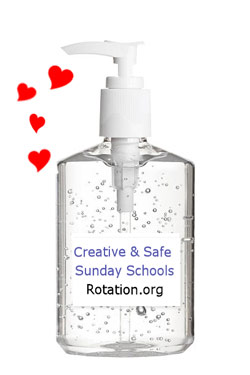 Safe Sunday Schools
Safe Sunday Schools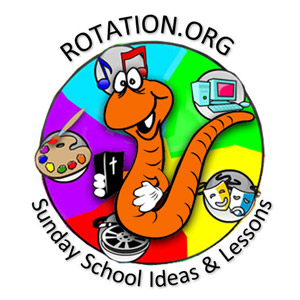
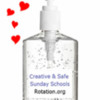

 Establish a "sick child" policy and educate parents.
Establish a "sick child" policy and educate parents.